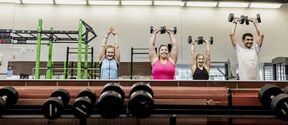‘Every day I felt happy to go to work. It never felt unpleasant.’

The alumnus Martti Johansson was born and raised in the rural municipality of Hyvinkää and passed his matriculation examination in the spring of 1961 at Järvenpää Coeducational School. In the army, he discussed the future with his barracks roommates who came from all over Finland. The School of Economics (today Aalto University School of Business) started to feel like a suitable place for him to study.
‘Because I was interested in the banking sector, on a leave from the Reserve Officer School (RUK) I decided to go to a Kansallispankki (KOP) branch office to ask for a summer job. Wearing my RUK uniform, I stepped into the HR manager's office and told him I wanted a summer job. I said that, unfortunately, I don’t have any certificates with me, to which he replied that the uniform will suffice. The RUK insignia were enough to convince him, and I got my summer job, and I’m still on the same trip.’
In autumn 1962, Martti started his studies at the School of Economics, by which time he had been working in the bank for almost four months. ‘I continued to work alongside my studies. At the School of Economics, my entire curriculum was built so that it benefited me in my job at the bank. I studied commercial law and business economics in particular.’
Seiskan Veljet at the KY dormitory was and still is an important group of friends
At the time, KY had dormitories not only on Pohjoinen Rautatiekatu but also on Ruusulankatu and in Kruununhaka. Martti got an apartment in the Pohjoinen Rautatiekatu dormitory, on its 7th floor. Nine other new business students also got an apartment on the same floor.
‘We became a close-knit group called Seiskan Veljet, the Brothers on the 7th floor. We came from different parts of Finland and from different cultures, so, in principle, we were a very diverse group of young men. However, right from the outset we were intellectually very compatible. We were also of the same age. Most people on our class were born in 1941, and we Brothers were born between 1938 and 1942. Of course, we also spent time with other students in the dormitory, but the 7th floor, KY7, was such a popular place that it was already a great thing for many people to be invited for a visit. During our studies, we had fun and fooled around together as well – but we also studied together. If someone happened to grasp something better in the class than others, he also helped others to understand it. Everyone had their own strengths, and helping others was a win-win situation. We took care of each other. If someone was sick, we brought him the lecture notes.’
Officially, Seiskan Veljet graduated in spring 1965. A few of the Brothers stayed in Helsinki to work, but some moved to other parts of Finland. ‘When our studies came to an end, we had a going-away party. We booked a cabinet at Hotel Torni and made a decision right then and there that we would get together at least once a year and always agree on who would invite the others the next year. We chose Tauno “Tane” Huhtala, one of the oldest Brothers, as group leader. It's a good idea to have a good leader for a group to make things work.’
President Martti Ahtisaari also lived on the 7th floor for a year. ‘Mara had already graduated as an elementary school teacher and had been teaching in Pakistan for many years. After returning to Finland, he applied to the School of Economics and joined our gang. After a year, however, he took up an office at the UN and transferred to tasks that were even better cut out for him.’
Ever since our student years, the friendships forged between Seiskan Veljet have persisted through the decades. As we supported and helped one another, it also resulted in all of us doing well in our professional lives. ‘Furthermore, we are all still married with our first wives, which is another unifying factor, and our wives, who we began calling Sisters, have become an important part of our group. I found my own wife at a KY dance. She was studying to become a nurse at the time. KY very warmly welcomed nursing students to its dances. We still meet with the whole group every year, including the widowed wives, taking turns in making the arrangements for the meeting. When Mara was elected President, our friendship with him was further intensified and, as Brothers, we visited both Mäntyniemi and Kultaranta. Mara also participated in the annual golf championships of the Brothers.’
First permanent job, first home and family life
Martti Johansson graduated in January 1967 after having finally completed the last two exams. ‘Until graduation, I worked in Kaivotalo, but I got my first permanent job as a newly graduated Master of Science in Business Administration (ekonomi in Finnish) at the Arkadiankatu branch office of Kansallispankki as a person in charge of the credit department. I soon moved from Arkadia to Museokatu 18 to become a head of department. The same office also managed the Helsinki-Vantaa Airport branch, to which I was assigned for three months to substitute for the bank manager, football player Pertti Hartikainen, who had been injured on a trip to an away match. The small airport office was located in a low wooden building with two glass counters, which tourists used to walk to, wanting to buy sausages.’
‘We got our first apartment with my fiancée when a professor from the School of Economics walked into the Arkadianmäki office where I worked back then. He had heard that we needed an apartment. We went to see his two-room flat in Haaga, and accepted it, of course. When I began advancing on my banking career, I was assigned a company-owned flat. At that time, it was a real benefit; the tax rate was very moderate until the end of the ‘80s. Then the taxes became higher. When my job changed, we also changed apartments. In the ‘70s, we got our own apartment.’
In his family, Martti Johansson has had to face some difficult times as well. His first-born son did not live for more than three days, and the second son is intellectually disabled. Consequently, the issues of the intellectually disabled have always been present in the family's life. It also became a life career for Martti's wife, Kaarina. She had specialised in hospital social work and later got a job as the executive director of an association for people with an intellectual disability. Martti and his son Janne go to HIFK ice hockey matches and Hyvinkää Tahko baseball games together. They became a passion and a nice, shared hobby for the men.
Martti Johansson had always been given assurances that the bank would provide him with a versatile training. From Arkadianmäki, he was transferred as an instructor to the bank's training centre, designed by architect Aarne Ervi, in Keilaniemi. ‘The bank had to give it up in 1971 when the SALT negotiators arrived in Finland. We were given two months to empty the premises. The training centre was moved to the facilities owned by TUKO in Hämeenkylä, Vantaa. Soon, the bank began to design and build its own training centre, which was located in Danskarby, Kirkkonummi. In Hämeenkylä, I spend only a month until I was transferred to the Kasarmikatu office as the branch supervisor. Four years passed in that position.’
Four fascinating decades in the banking world
The bank wanted to train Martti to higher managerial positions, which resulted in a transfer to the Kaivokatu office and an appointment into the second in command of the branch there. ‘At Kaivokatu, I was trained into a regional manager. That period lasted for three years until I was invited to become the regional manager of Tapiola, Espoo area. I was happy and satisfied in that position as well, as I had been in all my previous tasks. When Jaakko Lassila became the President of the Bank, the bank launched an organisational reform as banking operations began to evolve and change dramatically. I was made the regional manager of Western Uusimaa in 1985 and three years later the regional manager of the entire Uusimaa region; the region included the entire Uusimaa Province, excluding Helsinki. There were about 1,000 employees in the region. This continued until 1992, when I became the regional manager of KOP Helsinki. There were 1,500 employees, and a branch office in almost every street corner. The mergers within the banking sector continued in 1995 with the merger of KOP and Union Bank of Finland into Merita. At that time, I became one the two district managers of Merita Helsinki.’
‘In 2000, I retired from Nordea, and by then the number of branches had already fallen, and the staff had been reduced. In the Nordea years, at best, we had 2,500 employees at our service, and a few years after my retirement, the number of employees had dropped to 600. Towards the end of my career, I had to dismiss a lot of good people, which was really unfortunate. I always had very good colleagues and a close headquarters with 4–5 people.’
Donation to the School of Business in honour of the 80th birthday
On a beautiful day of April 13th, Martti Johansson got to experience the surprise of his life. A surprise coffee event was organised for Martti at the School of Business in Otaniemi. Brothers Reima and Pekka Räty, both Masters of Science (Technology) wanted to honour Martti's 80th birthday by giving a remarkable donation. Martti and the Räty brothers were welcomed to the event by Dean Timo Korkeamäki, Professor Vesa Puttonen and Head of External Relations Jonna Söderholm. The Dean expressed his warm thanks for the donation and presented Martti with a certificate of honour. Martti says that he felt very amazed throughout the event. ‘Never before in my 80 years have I experienced a surprise of this magnitude in my personal life. I felt flabbergasted, but also very happy and proud!’
The interview was made on 31 May 2022 at Restaurant Töölö, which is located in the premises of the former main building of the School of Business.
Text and photo: Terhi Ollikainen

Read donor stories and news about donations
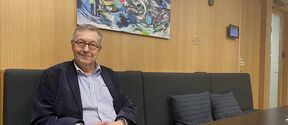
Chancellor Emeritus Matti Lehti: I feel great gratitude towards the School of Business
‘By donating, you can support young people who certainly need and appreciate the support they receive.’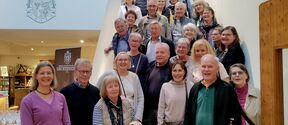
The Business and Economics Alumni Association donated to the international student exchange program at the School of Business
The association's 100th anniversary in February celebrated a vibrant association.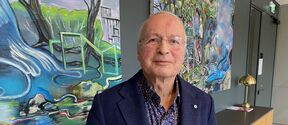
Donor Ari Koskivaara: Knowledge becomes outdated, unlike friendship
Ari Koskivaara supported the School of Business by donating shares, whereby the value of the gift is determined based on the market value of the shares.
Group donations for international student exchange
The classes of 1964 and 1974 closed their bank accounts and donated the remaining funds.Read more news

Join Unite's Well-Being Workshop Series
The interactive Zoom sessions are designed to support doctoral students’ well-being, strengthen a sense of belonging, and offer practical tools for success in their academic journey.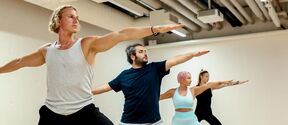
UniSport services at Aalto University in spring 2026
Group excericise classes and free break excercise for students and staff at Aalto University.Apply to be a guest professor or visiting researcher at the Université Grenoble Alpes
Unite! partner, Université Grenoble Alpes (UGA) has opened a call to host international professors and researchers for short stays.